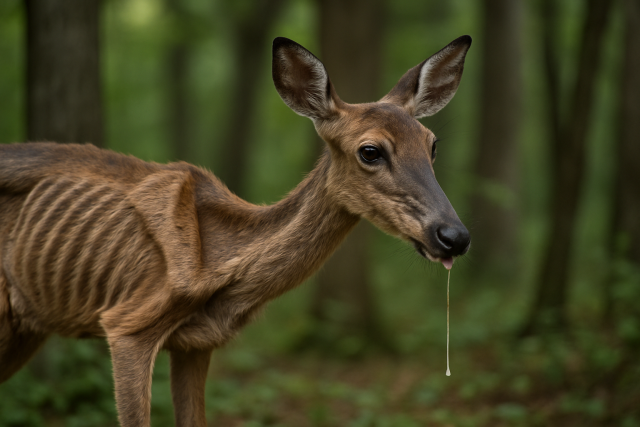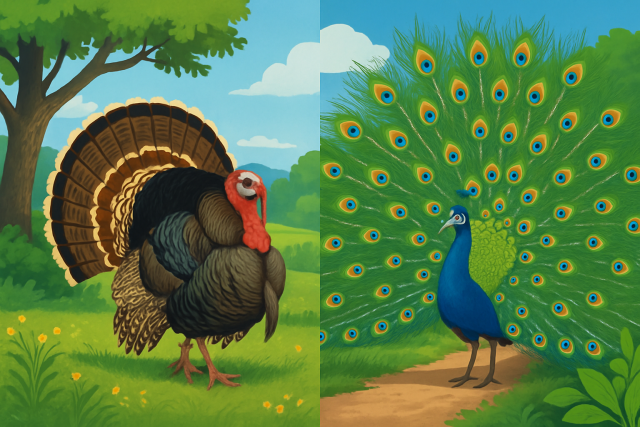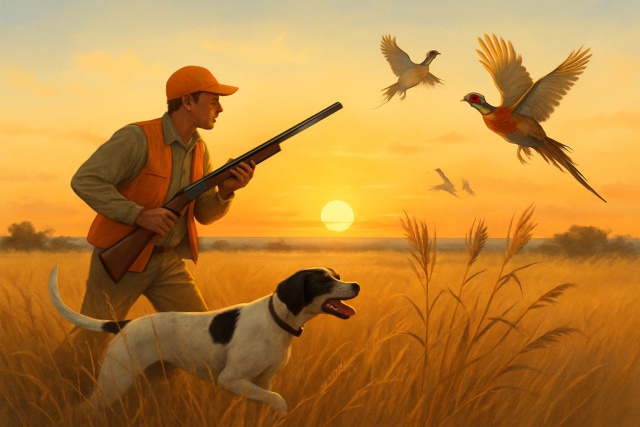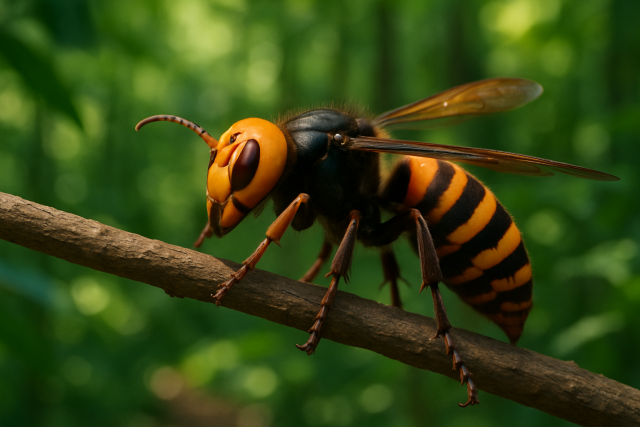Mule Deer vs White Tail - Differences Every Hunter Knows

Hunters have been chatting for ages about the ups and downs of hunting Mule Deer versus White Tail Deer. Each of these species throws its own unique curveballs and dishes out its own rewards, so getting a good handle on what makes them tick is pretty important.
Mule Deer and White Tail A Closer Look at Where They Call Home
Mule Deer and White Tail Deer call North America home. Although their territories occasionally cross paths, they usually have their own favorite hangouts. Mule Deer are mostly spotted out west in the U.S. and Canada where they seem to prefer rugged terrain and dry brushy spots. Meanwhile, White Tails stick around the eastern and central parts and thrive in dense forests and farmland.
- In rocky canyons and semi-arid brushlands across the western United States and Southwestern Canada. They have made those rugged spots their own.
- Are the social butterflies of eastern and central North America, settling into dense forests, farmland and the edges of suburban neighborhoods where you might catch a glimpse if you’re lucky.
- Prefer the high life, thriving at elevations from about 3,000 to over 10,000 feet which is quite a stretch.
- Are pretty adaptable creatures doing well in lowland areas like river bottoms and farmlands where cover is plentiful and safety feels just right.
- Often make the trek down to lower elevations to escape the chill while White Tails stick closer to their usual stomping grounds, following the food wherever it pops up.
Physical Differences That Make Identification a Whole Lot Easier
Telling Mule Deer apart from White Tail Deer starts with spotting a few key physical features that can be surprisingly telling. While they share a similar shape that might fool the untrained eye, Mule Deer usually carry more heft and boast distinctive forked antlers. Their tails are tipped with black, a detail that can really save the day in identification.
| Feature | Mule Deer | White Tail Deer |
|---|---|---|
| Height | Usually stands between 3 and 3.5 feet tall at the shoulder, giving it a bit of extra stature | Typically around 2.5 to 3 feet tall at the shoulder, just a tad shorter in comparison |
| Weight | Generally tipping the scales from 130 up to 280 pounds, not too shabby for a deer | Usually weighs in between 100 and 300 pounds, showing quite a bit of variation |
| Antlers | Sporting a distinctive bifurcated or forked shape, with tines branching off like little tree limbs | Features a single main beam with tines that grow upwards and forwards, kind of a classic look |
| Tail | Thick and proudly white with a black tip—measuring roughly 4 to 8 inches long—a tail with some flair | Long and thin, showing a white underside that really stands out when it’s raised as a signal; hard to miss |
| Coat Coloration | Leans towards a grayer, rough-and-ready appearance; summer coat is reddish-brown while winter shifts to gray, like changing outfits with the seasons | Reddish-brown in summer; then shifts to grayish-brown in winter, complete with a bright white rump patch that’s quite eye-catching |
| Facial Features | Big, pointed ears that seem to listen intently; dark forehead markings; and those distinct white patches on the cheeks that add character | Smaller ears; white rings framing the eyes; overall, facial markings are more subtle, blending in a bit more quietly |
Typical Behaviors and Ways of Moving That You’ve Probably Noticed (Whether You Realized It or Not)
Mule Deer and White Tail Deer each have their own quirks when it comes to behavior that shakes up hunting tactics. Mule Deer tend to be extra alert, often making quick zigzagging leaps to evade danger—it’s like they’re trying to outwit you at every turn. On the flip side, White Tails usually rely on bursts of speed and dash straight for thick cover whenever they get spooked. Their feeding routines and social habits don’t line up either, which means hunters need to switch gears depending on which deer they’re after.
- Mule Deer mostly browse on shrubs, forbs and woody plants and usually feed in open areas during the quiet hours of early morning and late evening.
- White Tails are adaptable, munching on a mix of leaves, acorns and crops. They seem to have a soft spot for forest edges and spots that offer a bit of cover.
- When startled, Mule Deer take off with bounding leaps that cover ground in a flash. They often make a beeline uphill to put distance between themselves and whatever spooked them.
- White Tails slip quietly into nearby dense cover, turning into masters of the vanishing act. They usually freeze for a moment, probably weighing their options before slipping away without a sound.
- Mule Deer typically stick to smaller groups. White Tails are social butterflies that often gather in larger herds when it’s not rutting season.
- The Mule Deer rut kicks off earlier, usually from late October to November. It is marked by quieter, more solitary behavior compared to their cousins.
- White Tail rut peaks a bit later, from November into early December. It’s quite the spectacle with grunt calls, scrapes and some seriously vigorous chases.
Hunting Techniques That Truly Fit Your Unique Deer Style
Hunting Mule Deer successfully means tweaking your strategy to fit their unique habits and hangouts. Usually that involves doing careful stalking at higher elevations and staying sharp for sudden lightning-fast dashes when they are spooked. When it comes to hunting White Tail, you’ll often have better luck with stand hunting near their bedding areas and luring them in with calls or scent mimics that pique the curiosity of those bucks.
- Mule Deer hunters typically kick things off by glassing from ridges then carefully make their way across open land trying not to spook anything nearby.
- Spot-and-stalk methods usually shine when you have a good spotting scope or binoculars in hand helping you pin down those Mule Deer from a distance without breaking a sweat.
- White Tail hunters lean heavily on tree stands or ground blinds tucked close to thick cover and often call and use scents to stir up some rut action with a bit of finesse.
- For the terrain for Mule Deer you want sturdy boots and lightweight gear that can handle the ups and downs especially since cover can be pretty scarce.
- Shot placement varies: Mule Deer demand precise lung or heart shots because if you just graze them they might wander off a long way. White Tail shots aim to be quick and clean since these guys usually dash into heavy cover in a flash.
Seasonal Variations and When It’s Really Prime Time to Hunt
Knowing the seasonal patterns of Mule Deer and White Tail really gives hunters a leg up, putting them right where the action happens during those vital rutting and feeding times.
| Season/Activity | Mule Deer | White Tail Deer |
|---|---|---|
| Hunting Season | Usually kicks off in September and stretches through December, covering quite a few crisp autumn days | Can be a bit all over the place but generally hangs around from October into January, so you’ve got a decent window |
| Rutting Period | Runs from late October to mid-November — prime time for some serious deer drama | Typically hits its stride mid-November through early December, when things get really interesting |
| Feeding Peaks | These guys like to nibble early morning and again in the late afternoon, pretty much year-round | Most active right around dawn and dusk, especially once fall and winter settle in, when meals matter most |
| Migration Time | They tend to pack up and head for lower elevations during the winter chill | Tend to stick closer to home, with only limited wandering about, nothing too adventurous |
Considerations for Meat Quality and Field Dressing
Both Mule Deer and White Tail offer lean, nutritious venison that hunters truly appreciate. There are some subtle nuances in flavor and texture, thanks to their unique diets and habitats. Getting the field dressing just right is important to preserving the quality of the meat.
- Mule Deer meat usually has a gamey kick and a firmer texture thanks to their varied diet of shrubs and woody plants—nothing bland about it.
- White Tail meat tends to be milder and more tender, reflecting their diet of acorns and softer vegetation that almost melts in your mouth.
- When field dressing Mule Deer, cool the meat quickly, especially at higher elevations where spoilage happens faster than you would expect.
- Field dressing White Tail requires careful evisceration to avoid puncturing the intestines—a slip-up that can ruin your day—especially when the weather is warm and harsh.
- Differences in yield are subtle but Mule Deer often give a slightly lower average yield per animal mainly due to their body makeup which keeps you on your toes.
Conservation Status and Hunting Rules You Need to Know
Keeping Mule Deer and White Tail populations healthy is essential for sustainable hunting. These species do not just appear out of thin air. They are carefully monitored, and the rules vary significantly from state to state to balance hunter enthusiasm and wildlife conservation. Following ethical hunting practices and complying with tagging and licensing requirements is more than just paperwork.
- Mule Deer populations have taken a noticeable hit in some western states due to habitat loss and harsh winters. This has tightened tag quotas quite a bit.
- White Tail deer numbers generally hold steady or are on the upswing. However, some areas face overpopulation, leading to tougher hunting rules to keep balance.
- Licensing rules and hunting season lengths vary often with specific antler point limits tailored to the species because nature doesn’t have one-size-fits-all.
- Conservation efforts like habitat restoration and regulated hunting do the heavy lifting in maintaining healthy populations of both species. This shows how attention and care can go a long way.
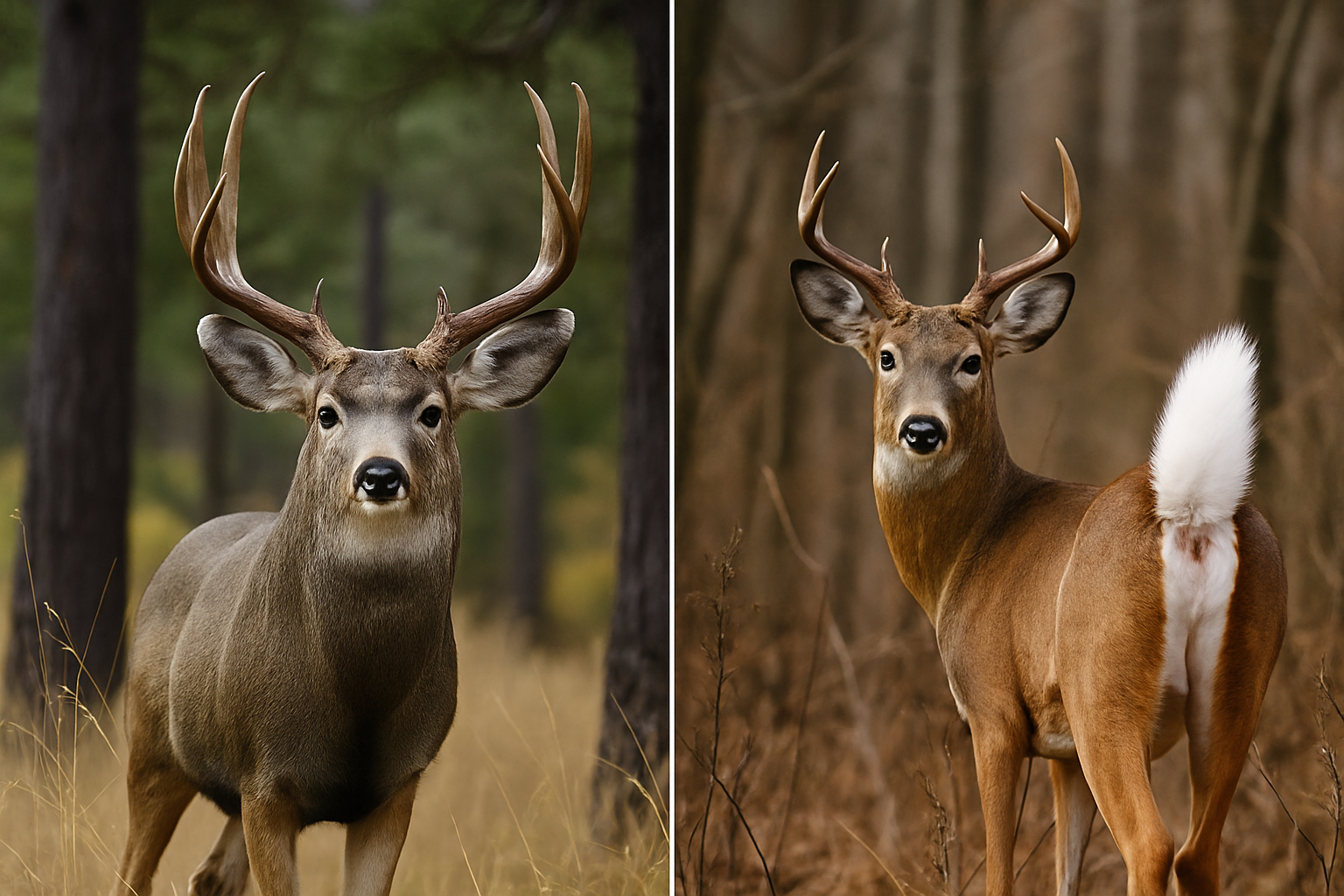
Photographic comparison capturing Mule Deer and White Tail in natural settings to visually reinforce identification differences
The Final Showdown Which Deer Claims the Crown for Hunters?
Choosing between hunting Mule Deer and White Tail often comes down to the terrain that gets your blood pumping and your skill set and what you’re hoping to take away from the experience. Mule Deer tend to pull you into challenging high-country landscapes where patience and sharp focus are key. Meanwhile White Tail deer bring a quicker and more adrenaline-filled pace in thick woods where calling and stand hunting steal the spotlight.
| Category | Mule Deer | White Tail Deer |
|---|---|---|
| Difficulty | Quite the challenge thanks to rugged terrain and their keen, jumpy nature | A bit easier, cozying up in dense cover before making a swift getaway |
| Availability | Mostly hangs out in the wild west of North America | You’ll spot these guys all over the U.S. and Canada, pretty much everywhere |
| Meat Quality | Firmer bite with that unmistakable, gamey punch | Tender and milder, perfect if you’re not into bold flavors |
| Hunting Experience | Often involves some serious stalking and dialing in those long shots | Typically involves sitting tight, calling, and setting up ambushes – patience is key |
| Trophy Potential | Known for their distinctive forked antlers that really stand out | Sports bigger antler racks and are more commonly spotted, so the bragging rights come easy |
When choosing between Mule Deer and White Tail hunters might want to consider the animal and the kind of backdrop they enjoy and how they like to hunt. If you enjoy tackling rugged high-altitude terrain with some long quiet stalks thrown in Mule Deer offer a one-of-a-kind challenge. Meanwhile if you lean towards sneaky ambushes in thick woods where movement and calling play big roles White Tail are often the go-to.


